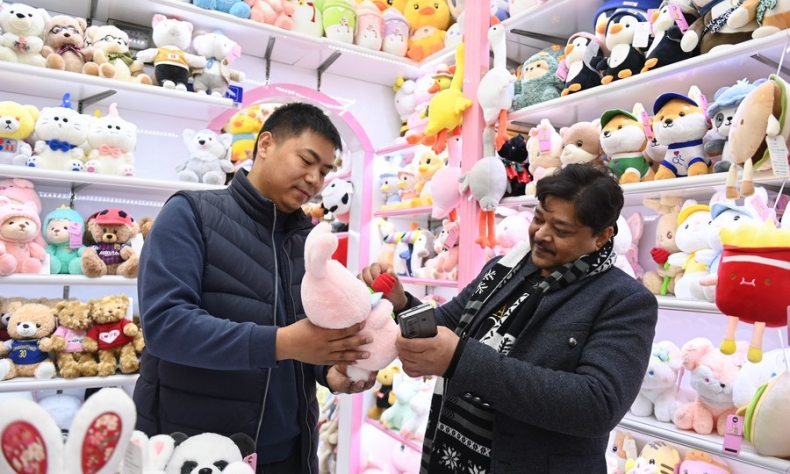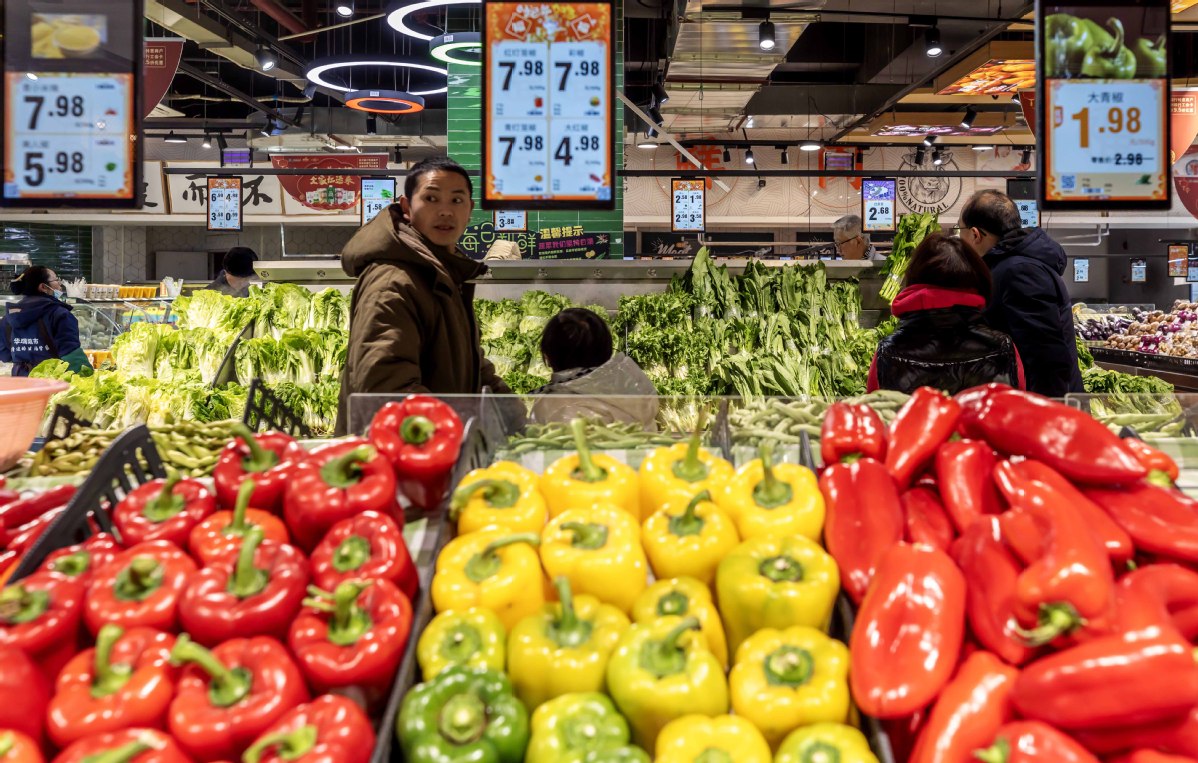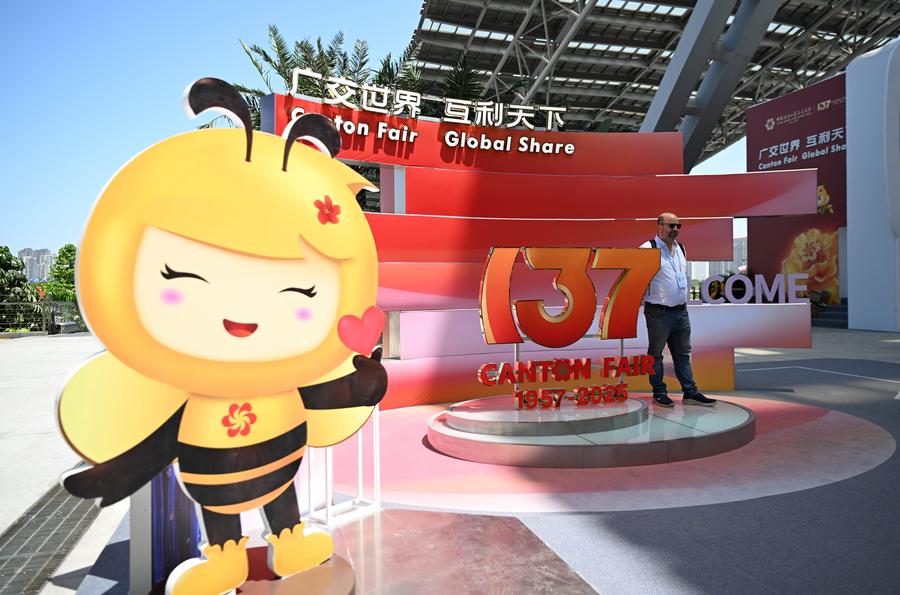How Chinese Exporters Are Maneuvering Against Tariff Hikes

Amid external uncertainties, the Chinese authorities should put greater emphasis on expanding domestic markets, widening marketing channels and addressing financing risks facing foreign trade companies.
Following the U.S. announcement of a new round of tariff hikes on Chinese goods on April 2 local time, Ella Wang, a seller of festive decorations in Yiwu, a hub of small commodities in Zhejiang Province, east China, has noticed fewer orders from the United States, but exports to Europe, Africa and the Middle East continue without price rises.
“The U.S. tariffs have some impact, but we will adapt by improving our products,” she said. Wang and other local sellers are innovating, for example by adding remote controls to Christmas lights or using 3D printing for Halloween masks, to enhance competitiveness.
According to Wang, Yiwu sellers mostly rely on offline trade and bulk commodity supply, and have diversified their markets in recent years to mitigate risks. This shift aligns with broader trends among Chinese exporters facing U.S. trade barriers.
Since early April, the U.S. has introduced new tariffs on countries including China, further constraining small foreign trade businesses. Many such businesses, like Wang’s, are adapting strategically to tap domestic and global markets.
The General Administration of Customs of China said the country’s exports rose 6.9 percent year on year to 6.13 trillion yuan ($836.7 billion) in January-March this year.
In 2024, China’s retail sales of consumer goods reached 48.8 trillion yuan ($6.6 trillion), more than 10 times the value of exports to the U.S., data from the National Statistics Bureau showed.
The U.S. tariff hikes ultimately burden American consumers and businesses through higher import costs, Sang Baichuan, Dean of the Institute of International Economy at the University of International Business and Economics, told Beijing Review, adding that China’s exporters have actively expanded into emerging markets, driving rapid growth in trade with these economies.
Strong backup
The China General Chamber of Commerce, along with six other national trade associations, issued a joint proposal on April 11, urging grocery chains, department stores, e-commerce platforms and wholesale markets to establish green-light channels for domestic exporters, including dedicated retail zones and promotional events to showcase their products and facilitate the sales of their products in domestic market.
Retailers across China have rolled out measures to help exporters explore the domestic market. Chinese e-commerce giant JD.com has pledged to purchase goods worth at least 200 billion yuan ($27.3 billion) from exporters over the coming year.

FreshHippo, the omnichannel supermarket chain of Chinese tech titan Alibaba, announced the launch of a streamlined onboarding process for exporters, including 24-hour support and a new section on its mobile app tailored to exporters’ products.
Yonghui, one of China’s largest supermarket chains, also published an open letter on the Chinese all-in-one super app Wexin on April 7, committing to assist exporters in clearing surplus inventory, offering to place eligible products on shelves within 15 days through an express approval process. It further promised to offer exporters product development support and marketing assistance.
As of April 16, Yonghui had received over 200 partnership inquiries from supply chain firms, with over 100 companies already engaged in procurement negotiations.
Chinese online service platform Meituan announced a partnership with domestic export-oriented enterprises to launch a dedicated Premium Export Goods section, leveraging its next-day delivery network that covers more than 2,000 counties and cities and over 1 million community stations to bring these products into households nationwide.
Overcoming challenges
The 137th edition of the China Import and Export Fair, also known as the Canton Fair, hosted its first phase on April 15-19 in Guangzhou, Guangdong Province in south China, attracting more than 200,000 preregistered overseas buyers from 215 countries and regions. The second phase runs from April 23 to 27, and its third and final phase will take place on May 1-5. Many domestic suppliers have already seized the opportunity to expand their target client pool via the fair.
Tang Simin, General Manager of Guangzhou Aodilai Electronic Technology Co. Ltd., a business focused on car part production, told Beijing Review that the company attended the fair this year to further explore global markets. “Many clients from countries including Peru, Chile, Panama and Ecuador reached us at the fair, with many placing orders,” she said.
While the U.S. is one of the company’s major markets, it exports its products to over 100 countries and regions, with a growing presence in Latin American and Caribbean countries, Tang said.
Philip Richardson, an entrepreneur from California, the U.S., first attended the fair in 1988. He founded Trueanalog Strictly OEM, designing and manufacturing premium loudspeakers, in Guangzhou in 2004.

Richardson told GDToday, an English-language online news platform under Guangdong-based Nanfang Media Group, that the company exports about 60 to 65 percent of its products to the U.S. As costs soar after recent tariff hikes, major chain stores are reaching their partners in China to halt shipments, with the tariffs eventually passed on to end consumers in the U.S.
According to him, opening a factory outside China is currently financially impractical, due to both the country’s lower labor costs, as well as the ability of Chinese engineers to do research and development and deliver results swiftly.
A boomerang
The China Chain-Store & Franchise Association and seven other industry associations jointly announced an initiative on April 12 to promote the better integration of domestic and foreign trade.
The China Chamber of Commerce for Import and Export of Textiles in early April stated that the U.S. move of imposing so-called “reciprocal tariffs” violates World Trade Organization trade rules. The statement warned that such actions will damage the global trading system, disrupt economic stability and harm consumers and industries globally.
The China Chamber of Commerce for Import and Export of Machinery and Electronic Products has called on its member enterprises and domestic peers in the mechanical and electrical industry to adjust foreign trade strategies, explore diversified markets, and accelerate the transformation and upgrading of foreign trade.
Sang admitted that the U.S. additional tariffs have impacted some Chinese foreign trade companies which are exposed to the brunt. “In the short term, the tariffs will inevitably affect China’s exports and increase downward pressure on the Chinese economy. The country’s export sector to the U.S. employs over 26 million people, among the 180-million-strong workforce in the export industries,” Sang said.
But he also stressed that, as of late 2024, the U.S. was entirely dependent on China for 254 specific product categories, with no alternatives available globally. The U.S. cannot find alternatives for some made-in-China products in the short term, and its tariffs imposed on other countries has further narrowed down its import channel options.
The imposition of additional tariffs will likely affect not only other countries’ exports to the U.S. but also the overseas operations of U.S.-invested enterprises, ultimately harming the profitability of U.S. multinational corporations, Sang said.
“Amid external uncertainties, the Chinese authorities should put greater emphasis on expanding domestic markets, widening marketing channels and addressing financing risks facing foreign trade companies. Export companies also need to align with domestic markets on production standards to meet domestic demand,” Sang said.
 Facebook
Facebook
 Twitter
Twitter
 Linkedin
Linkedin
 Google +
Google +










